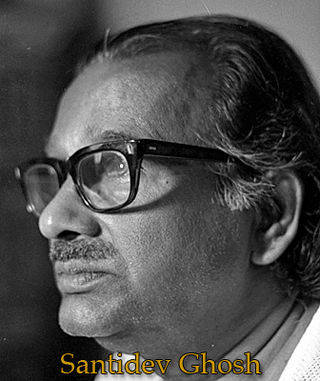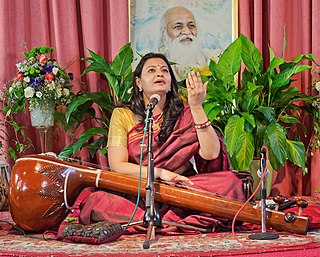
Indian classical dance, or Shastriya Nritya, is an umbrella term for different regionally-specific Indian classical dance traditions, rooted in predominantly Hindu musical theatre performance, the theory and practice of which can be traced to the Sanskrit text Natya Shastra. The number of Indian classical dance styles ranges from eight to twelve, or more, depending on the source and scholar; the main organisation for Indian arts preservation, the Sangeet Natak Academy, recognizes eight – Bharatanatyam, Kathak, Kuchipudi, Odissi, Kathakali, Sattriya, Manipuri and Mohiniyattam. Additionally, the Indian Ministry of Culture includes Chhau in its list, recognising nine total styles. Scholars such as Drid Williams add Chhau, Yakshagana and Bhagavata Mela to the list. Each dance tradition originates and comes from a different state and/or region of India; for example, Bharatanatyam is from Tamil Nadu in the south of India, Odissi is from the east coast state of Odisha, and Manipuri is from the northeastern state of Manipur. The music associated with these different dance performances consists many compositions in Hindi, Malayalam, Meitei (Manipuri), Sanskrit, Tamil, Odia, Telugu, and many other Indian-Subcontinent languages; they represent a unity of core ideas, and a diversity of styles, costumes and expression.

Shovana Narayan is a recognised Indian Kathak dancer and a career officer with Indian Audit and Accounts Service. She performs in India and internationally, and has been awarded the Padma Shri. She trained under Birju Maharaj.
Ratan Thiyam is an Indian playwright and theatre director, and the winner of Sangeet Natak Akademi Award in 1987, one of leading figures of the "theatre of roots" movement in Indian theatre, which started in the 1970s. Also known as Thiyam Nemai, Ratan Thiyam is known for writing and staging plays that use ancient Indian theatre traditions and forms in a contemporary context. A former painter, and proficient in direction, design, script and music, Thiyam is often considered one of leading contemporary theatre gurus.
The Sangeet Natak Akademi Fellowship, also known as Akademi Ratna Sadasyata, is an Indian honour for the performing arts presented by Sangeet Natak Akademi. It is "the most prestigious and rare honour" conferred by the Akademi and is "restricted to 40 individuals at any given time".
V. K. Narayana Menon (1911–1997) was a scholar of classical Indian dance and Indian classical music. He was one of the prominent art critics of India and a Sangeet Natak Akademi Fellowship.

Santidev Ghose was an Indian author, singer, actor, dancer and maestro of Rabindra Sangeet.

Arunima Kumar, Sangeet Natak Akademi Yuva Puraskar awardee for the year of 2008 for Kuchipudi. As a young girl of 9, Arunima acted in the ballet Amrapali. The Kuchipudi Dance Academy formally launched her in 1995 where she performed her Arangetram at the Triveni Kala Sangam, New Delhi.

Shriram Bharatiya Kala Kendra (SBKK) is an Indian cultural institution which runs a school for music, dance and performing arts in New Delhi. It was founded by Sumitra Charat Ram in 1952, and imparts training in Indian classical dance styles and music, including Kathak, Bharatanatyam, Odissi, Chhau, Hindustani Classical music, both Vocal and Instrumental. Its associated organisation is the Shri Ram Centre for Performing Arts at Safdar Hasmi Marg, in the Mandi House area, the cultural hub of Delhi, the centre includes a theater for the performing arts, a theatre repertory company and an acting school.

Guru Mayadhar Raut is an Indian classical Odissi dancer, choreographer and Guru.
Tapas Sen was a noted Indian stage lighting designer, who was an important figure in 20th-century Indian theatre. He started working with Bengali theatre movement in Kolkata in the late 1940s, along with noted directors, Utpal Dutt and Shambhu Mitra. Later he became a founding member of the Indian People's Theatre Association's (IPTA), Delhi chapter, and worked closely with Hindi theatre. Through his career stretching five decades he worked theatre directors, Ebrahim Alkazi, Vijay Tendulkar, and also dancers Sadhana Bose, Chandralekha, Birju Maharaj and Kelucharan Mahapatra. He was known not only for his creative stage lighting, but also had a significant impact on the work of leading theatre director of the time.
Rohini Bhate was among the senior most Kathak dance exponents in India, who developed as a performer, teacher, writer, researcher and critic this Indian classical dance. During her career, she was awarded with several recognitions, such as the Sangeet Natak Akademi Award, and the Kalidas Samman.

Maya Rao was an Indian classical dancer, choreographer and educator, in Kathak dance. She is known for her pioneering work in Kathak choreography, especially in dance ballets, and is credited for bringing Kathak, a North Indian-dance style to South India, when she opened her dance school, Natya Institute of Kathak and Choreography (NIKC) in Malleswaram, Bangalore in 1987. She was also the founder director of her dance company, "Natya and Stem Dance Kampni", an amalgam of NIKC and the STEM Dance Kampni based in Bangalore. After her early training under Guru Sohanlal of Jaipur Gharana, followed by Guru Sunder Prasad also of the Jaipur Gharana, and went to train under Guru Shambhu Maharaj of Lucknow Gharana at National Institute of Kathak Dance in Delhi.
Gambhari Devi was a veteran Indian folk singer, folklorist and dancer from Bilaspur district, Himachal Pradesh, noted for her contribution to the folk culture of Himachal Pradesh.

R. Nagarathnamma (1926–2012) was an Indian theatre personality and the founder of Stree Nataka Mandali, an all-women theatre group based in Bengaluru. A recipient of the Sangeet Natak Akademi Award, she was honored by the Government of India, in 2012, with the fourth highest Indian civilian award of Padma Shri.
Yamunabai Waikar, née Yamunabai Vikram Jawle was an Indian folk artist, known for her expertise in the Marathi folk traditions of Lavani and Tamasha, folk art forms involving music and dance and reported to be one of the leading exponents of the art genres. A recipient of the Sangeet Natak Akademi Award, she was honored by the Government of India, in 2012, with the fourth highest Indian civilian award of Padma Shri.
Rita Ganguly is an exponent in the Indian classical arts. An accomplished dancer, musician and vocalist, she was honoured with the Sangeet Natak Akademi Award in 2000 and with the Padma Shri in 2003. She is the mother of actress Meghna Kothari and the younger sister of the famous Ravindra Sangeet singer Gita Ghatak.

Meeta Pandit is a Hindustani Classical vocalist and a leading exponent of the Gwalior Gharana. She is the granddaughter and disciple of Krishnarao Shankar Pandit and daughter of Laxman Krishnarao Pandit. She is the sixth in the unbroken lineage and the first woman in the family to have taken up music as a profession.
Sonam Tshering Lepcha was an Indian folk musician, composer and lyricist. He was the first among Lepcha people to air his voice on All India Radio and was credited with the revival of Lepcha culture, one of the indigenous cultures of the Indian state of Sikkim. He was reported to be credited with over 400 folk songs, 102 folk dances and 10 dance dramas. He died on 30 July, 2020 due to cardiac arrest.

Jatin Goswami is an Indian dancer and choreographer, known as one of the prominent exponents of the classical dance form of Sattriya. He is the founder director of Sattriya Akademi, Guwahati, a sitting member of its Advisory Committee, and a former member of the General Council of the Sangeet Natak Akademi. He is also the founder of Alok Shilpi Sangha, a dance academy and Pragjyoti Kala Parishad, a cultural organization, and is a recipient of the 2004 Sangeet Natak Akademi Award. The Government of India awarded him the fourth highest civilian honour of the Padma Shri, in 2008, for his contributions to Sattriya dance.

Sangeet Natak Akademi Tagore Ratna and Sangeet Natak Akademi Tagore Puraskar were given at special events organised by Sangeet Natak Akademi in












